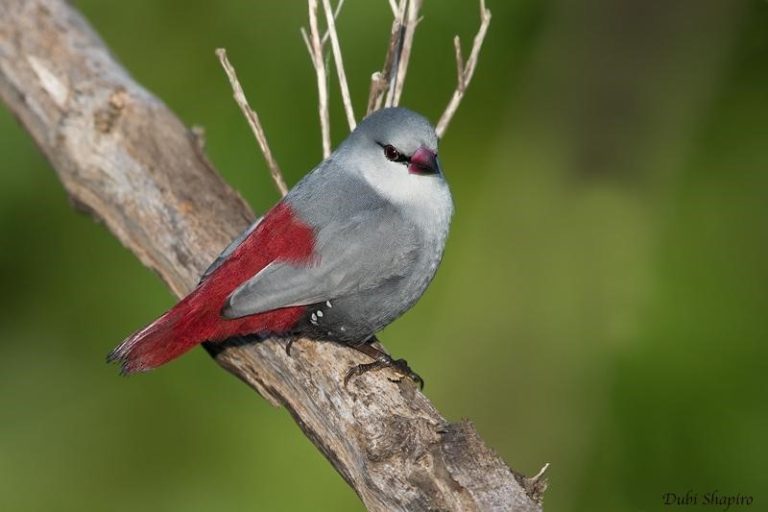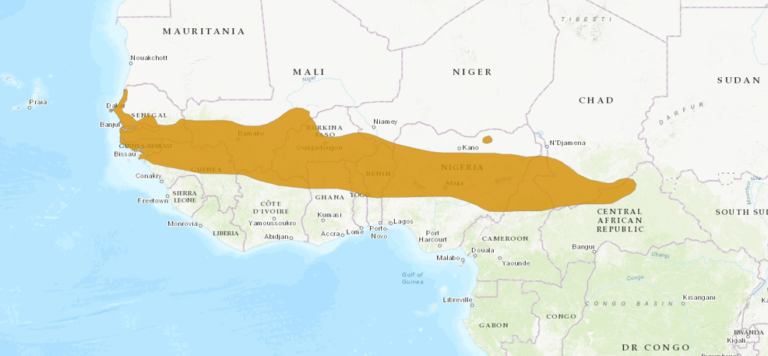Birdfinding.info ⇒ Locally common in southern Senegal and Gambia, where it can often be found at several sites along the coast, including Toubakouta, Tanji Bird Reserve, and Farasuto Forest, and inland at Tendaba, Niokolo-Koba National Park, and Dindéfelo. Elsewhere it is locally common in parks around Bamako, Mali, in Ghana at Mole National Park, and in Nigeria at Amurum Forest Reserve. On Hawaii’s Big Island it is mainly found along the western coast south of the Kona airport, and is often found at Aimakapa Pond, Kealakekua Bay, and in the towns of Kailua-Kona and Kahaluu-Keauhou.
Lavender Waxbill
Estrilda coerulescens
Sahel region of western and central Africa.
Inhabits brushy habitats From Senegal to Guinea east across the Sahel to southern Chad and the Central African Republic.
Introduced to Hawaii, where it is well-established on the Big Island, and tenuously on Oahu (in the southeastern hills around Aina Haina).
Identification
Pale-gray with crimson or magenta hindquarters—from the rump and vent to the tip of the tail. When spread, the tail shows black stripes.
Has a short black eyeline or mask. The bill is subtly bicolored: dull-purplish near the base and blackish toward the tip.

Lavender Waxbill. (Marakissa Rivercamp, Gambia; January 30, 2011.) © Frans Vandewalle
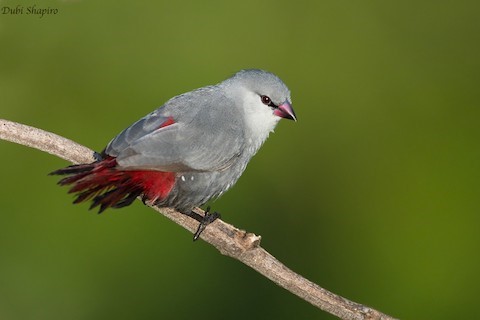
Lavender Waxbill, showing black in tail feathers. (Mole National Park, Ghana; August 4, 2016.) © Dubi Shapiro
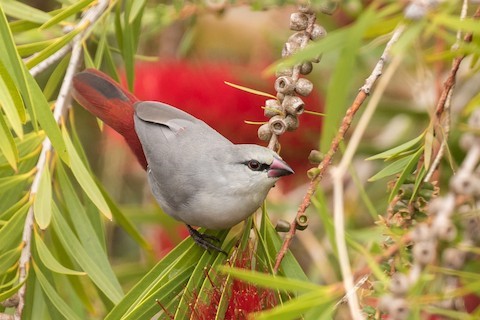
Lavender Waxbill. (Kealakekua, Big Island, Hawaii; March 25, 2017.) © Sharif Uddin
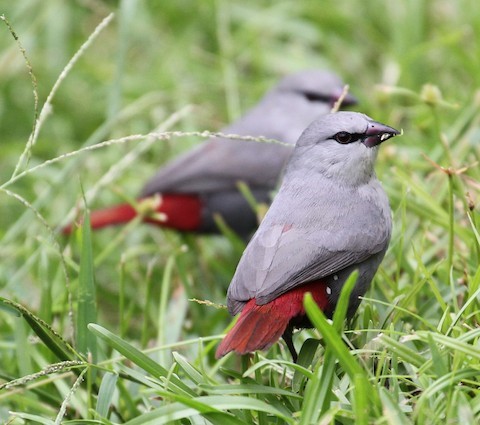
Lavender Waxbills. (Kailua-Kona, Big Island, Hawaii; January 9, 2016.) © Don Coons
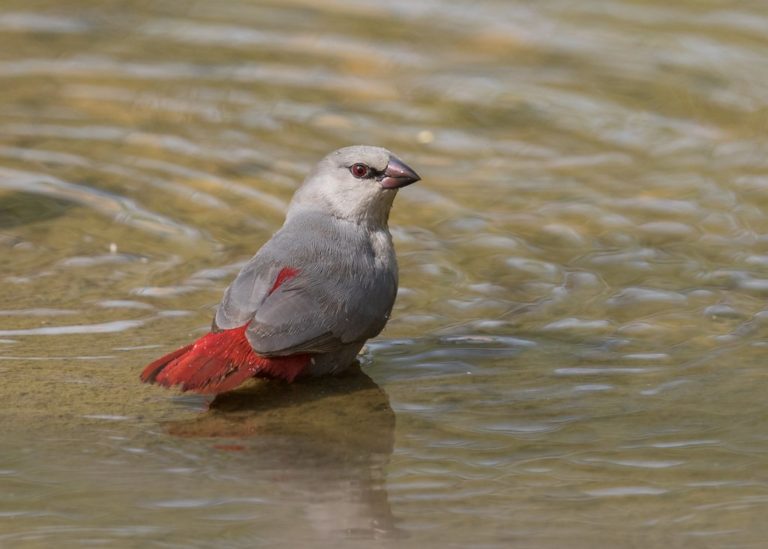
Lavender Waxbill. (Farasutu, Gambia; November 8, 2018.) © Gary Faulkner
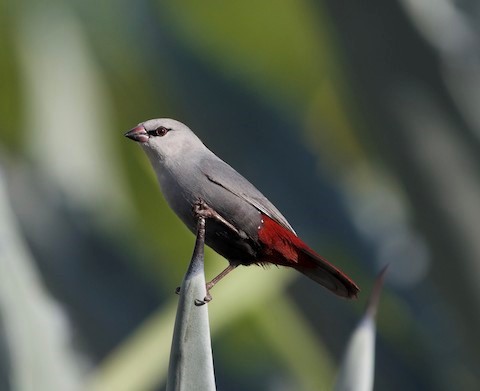
Lavender Waxbill. (Kailua-Kona, Big Island, Hawaii; September 5, 2018.) © Bill Brynteson
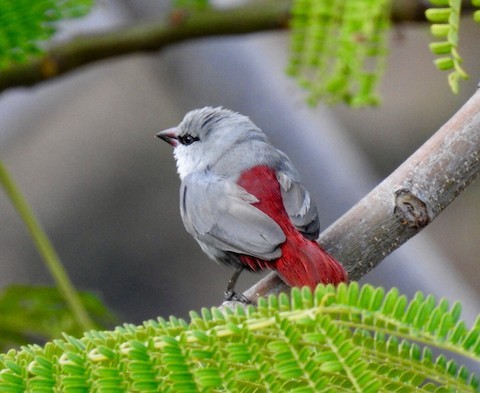
Lavender Waxbill, showing magenta coloration extending to the lower back. (Kona Paradise, Big Island, Hawaii; December 30, 2017.) © Ron Pozzi
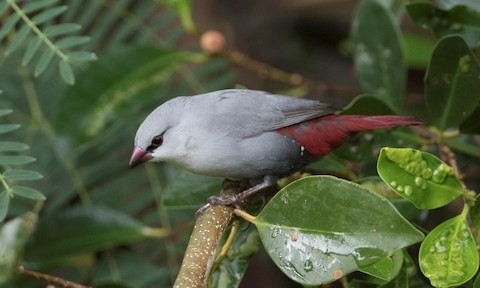
Lavender Waxbill. (Kahaluu-Keauhou, Big Island, Hawaii; September 24, 2016.) © Brian Sullivan
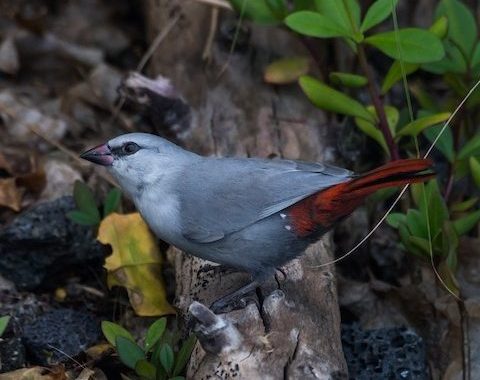
Lavender Waxbill. (Aimakapa Pond, Kaloko-Honokohau National Historical Park, Big Island, Hawaii; January 1, 2020.) © Jim Merritt
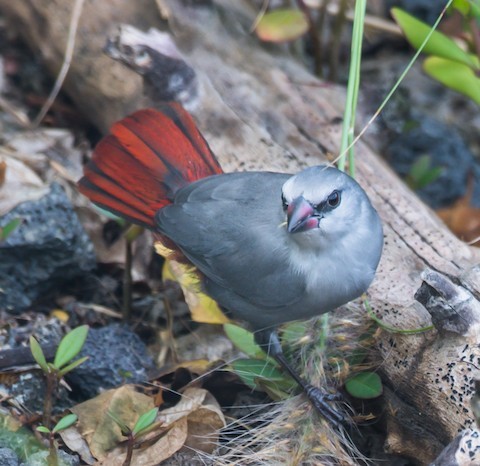
Lavender Waxbill, showing black stripes on the tail. (Aimakapa Pond, Kaloko-Honokohau National Historical Park, Big Island, Hawaii; January 1, 2020.) © Jim Merritt
Notes
Monotypic species.
References
BirdLife International. 2018. Estrilda coerulescens. The IUCN Red List of Threatened Species 2018: e.T22719518A131994177. https://dx.doi.org/10.2305/IUCN.UK.2018-2.RLTS.T22719518A131994177.en. (Accessed April 2, 2020.)
Clement, P., A. Harris, and J. Davis. 1993. Finches and Sparrows: An Identification Guide. Princeton University Press, Princeton, N.J.
eBird. 2020. eBird: An online database of bird distribution and abundance. Cornell Lab of Ornithology, Ithaca, N.Y. http://www.ebird.org. (Accessed April 2, 2020.)
Payne, R. 2020. Lavender Waxbill (Estrilda coerulescens). In: del Hoyo, J., Elliott, A., Sargatal, J., Christie, D.A. & de Juana, E. (eds.). Handbook of the Birds of the World Alive. Lynx Edicions, Barcelona. https://www.hbw.com/node/61108. (Accessed April 2, 2020.)
Pratt, H.D. 1993. Enjoying Birds in Hawaii: A Birdfinding Guide to the Fiftieth State (Second Edition). Mutual Publishing, Honolulu, Hawaii.
Pyle, R.L., and P. Pyle. 2017. The Birds of the Hawaiian Islands: Occurrence, History, Distribution, and Status. Version 2 (January 1, 2017). http://hbs.bishopmuseum.org/birds/rlp-monograph/. B.P. Bishop Museum, Honolulu, Hawaii.
van Perlo, B. 2002. Birds of Western and Central Africa. Princeton University Press, Princeton, N.J.
Xeno-Canto. 2020. Lavender Waxbill – Estrilda caerulescens. https://www.xeno-canto.org/species/Estrilda-caerulescens. (Accessed April 2, 2020.)
